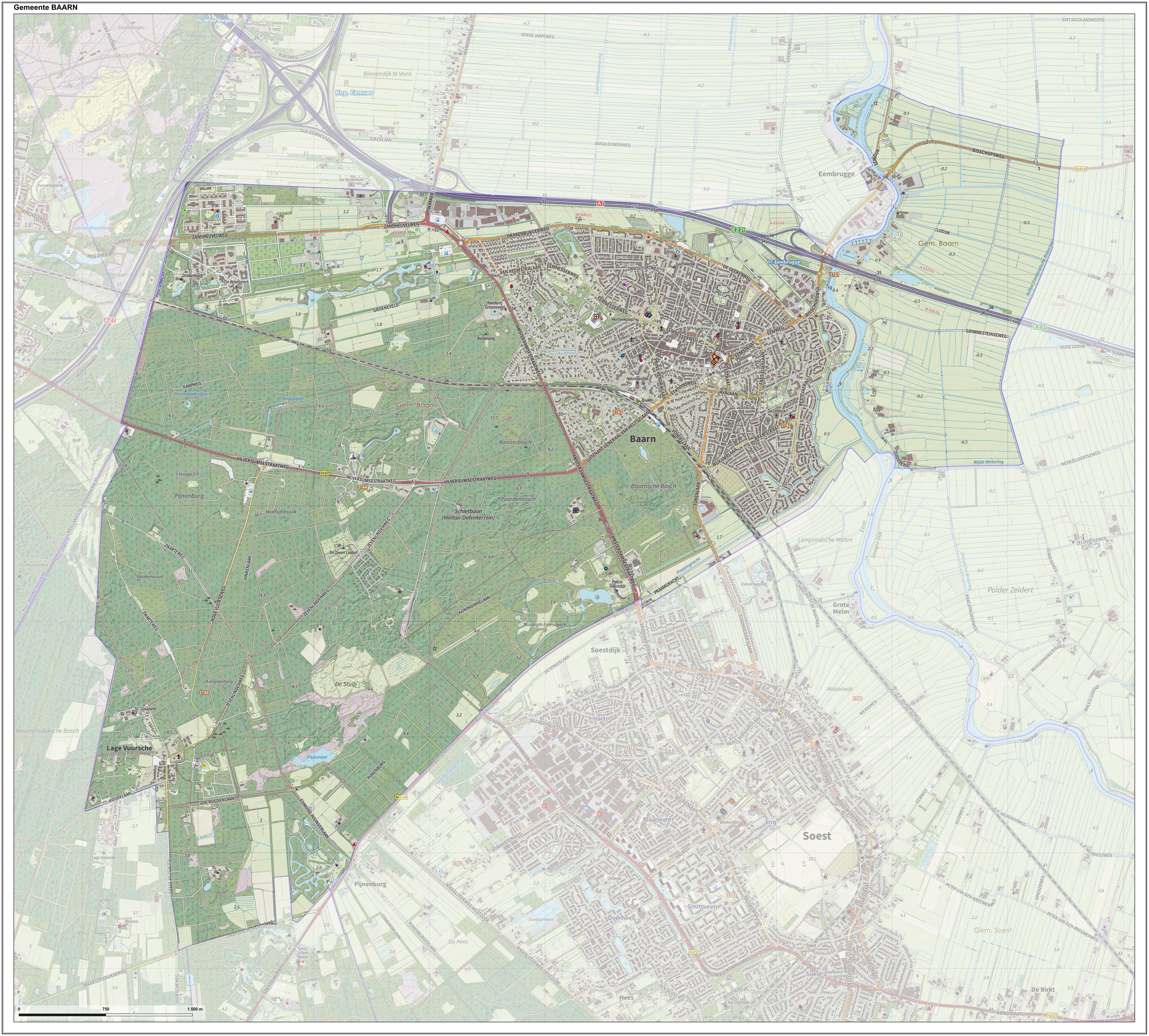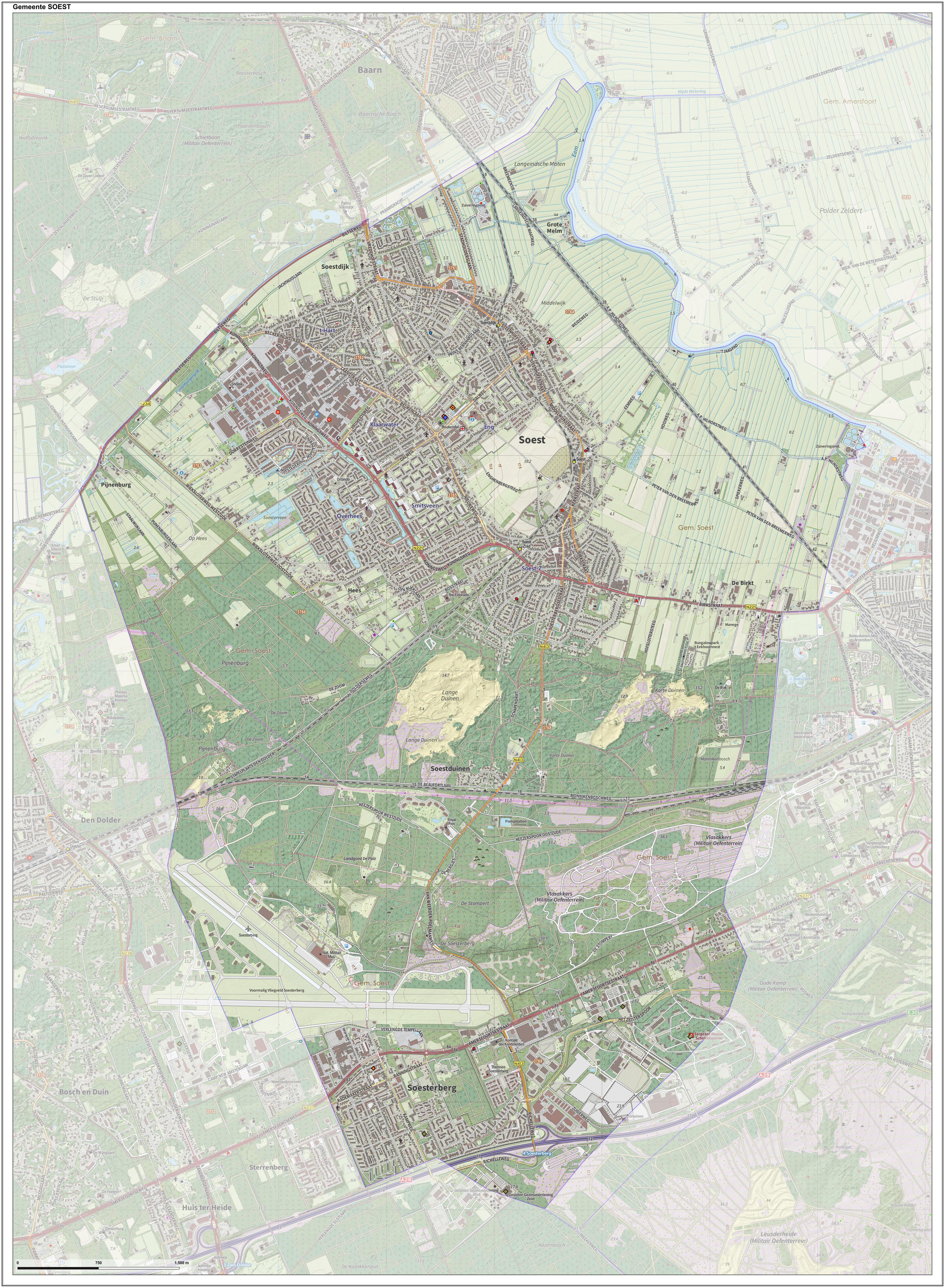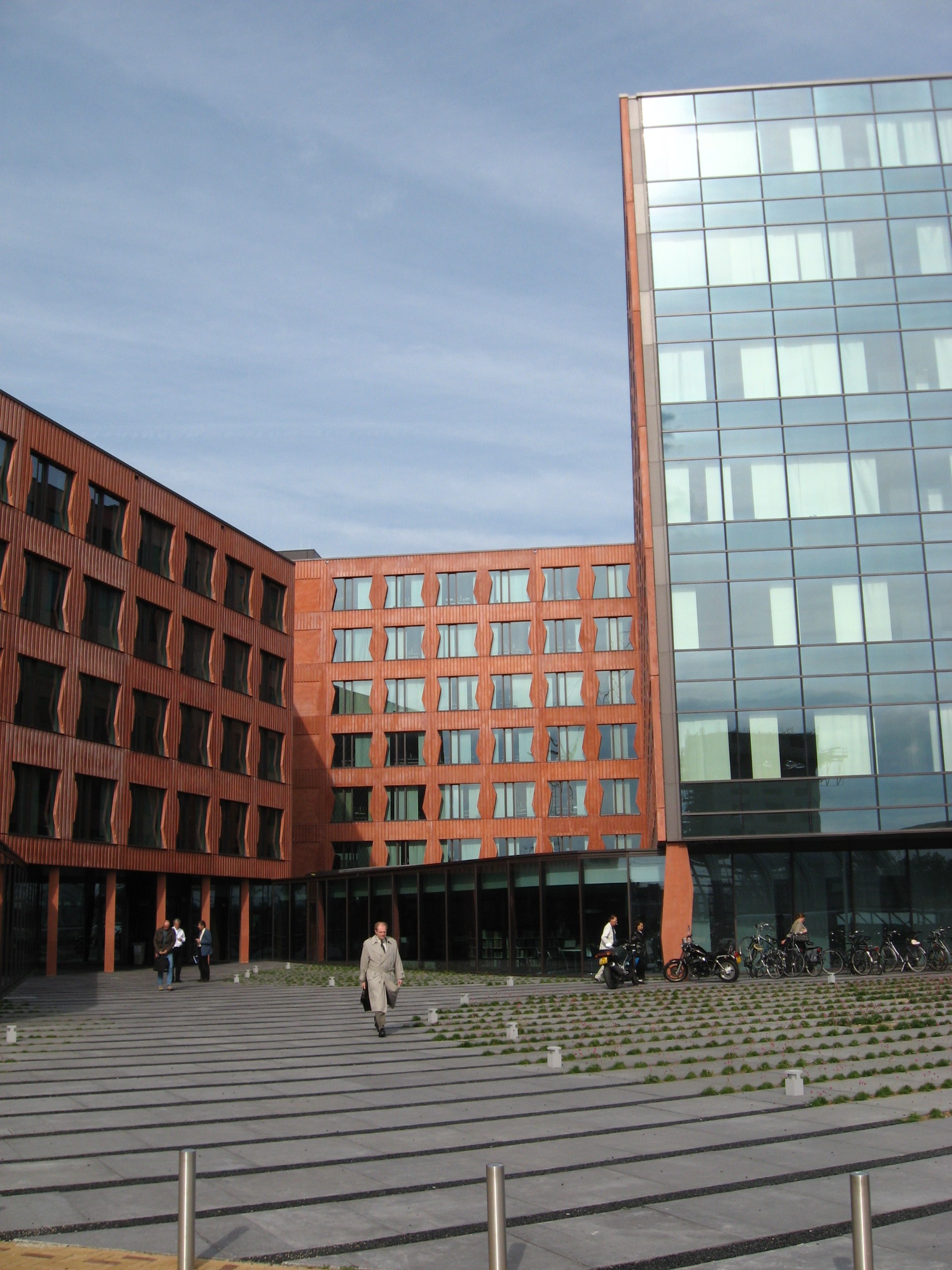|
Lage Vuursche
Lage Vuursche () is a village in the municipality of Baarn in the Netherlands. It lies about west of Soest, surrounded by woods, in the province of Utrecht. In 2001 the village of Lage Vuursche had 139 inhabitants. The built-up area of the town was 0.04 km², and contained 61 residences.Statistics Netherlands (CBS), ''Bevolkingskernen in Nederland 2001'' . Statistics are for the continuous built-up area. The slightly larger statistical district of Lage Vuursche has about 210 inhabitants.Statistics Netherlands (CBS), ''Gemeente Op Maat 2004: Baarn' Until 1857 the village was a separate municipality, under the name ''De Vuursche'', together with the small hamlet Hoge Vuursche. It then merged with the municipality of Baarn. The castle Drakensteyn, since February 2014 residence again of Princess Beatrix, is situated just east of the village. Her son Prince Friso is buried in the graveyard beside the moated manor. Apart from the royal family the most famous person from Lage V ... [...More Info...] [...Related Items...] OR: [Wikipedia] [Google] [Baidu] |
Village
A village is a clustered human settlement or community, larger than a hamlet but smaller than a town (although the word is often used to describe both hamlets and smaller towns), with a population typically ranging from a few hundred to a few thousand. Though villages are often located in rural areas, the term urban village is also applied to certain urban neighborhoods. Villages are normally permanent, with fixed dwellings; however, transient villages can occur. Further, the dwellings of a village are fairly close to one another, not scattered broadly over the landscape, as a dispersed settlement. In the past, villages were a usual form of community for societies that practice subsistence agriculture, and also for some non-agricultural societies. In Great Britain, a hamlet earned the right to be called a village when it built a church. [...More Info...] [...Related Items...] OR: [Wikipedia] [Google] [Baidu] |
Baarn
Baarn () is a municipality and a town in the Netherlands, near Hilversum in the province of Utrecht. The municipality of Baarn The municipality of Baarn consists of the following towns: Baarn, Eembrugge, Lage Vuursche. The town of Baarn Baarn, the main town of the municipality, received city rights in 1391. The town lies about 8 km east of Hilversum. In 2001, the town of Baarn had a population of 22,871. The urban area of the town was , and consisted of 10,076 residences.Statistics Netherlands (CBS), ''Bevolkingskernen in Nederland 2001'' . Statistics are for the continuous built-up area. The royal family owns several houses around Baarn. The Soestdijk Palace in Baarn was the home of Queen Emma, Queen Juliana and Juliana's husband prince Bernard. Crown prince Willem Alexander and his brothers attended school ('' Nieuwe Baarnse School'' and '' Het Baarnsch Lyceum'') in Baarn when Queen Beatrix (then princess) and her family lived at Castle Drakesteijn in the village ... [...More Info...] [...Related Items...] OR: [Wikipedia] [Google] [Baidu] |
Utrecht (province)
Utrecht (), officially the Province of Utrecht ( nl, Provincie Utrecht, link=no), is a province of the Netherlands. It is located in the centre of the country, bordering the Eemmeer in the north-east, the province of Gelderland in the east and south-east, the province of South Holland in the west and south-west and the province of North Holland in the north-west and north. The province of Utrecht has a population of 1,353,596 as of November 2019. It has a land area of approximately . Apart from its eponymous capital, major cities and towns in the province are Amersfoort, Houten, IJsselstein, Nieuwegein, Veenendaal and Zeist. The busiest railway station in the Netherlands, Utrecht Centraal, is located in the province of Utrecht. History The Bishopric of Utrecht was established in 695 when Saint Willibrord was consecrated bishop of the Frisians at Rome by Pope Sergius I. With the consent of the Frankish ruler, Pippin of Herstal, he settled in an old Roman fort in Utrecht. A ... [...More Info...] [...Related Items...] OR: [Wikipedia] [Google] [Baidu] |
Netherlands
) , anthem = ( en, "William of Nassau") , image_map = , map_caption = , subdivision_type = Sovereign state , subdivision_name = Kingdom of the Netherlands , established_title = Before independence , established_date = Spanish Netherlands , established_title2 = Act of Abjuration , established_date2 = 26 July 1581 , established_title3 = Peace of Münster , established_date3 = 30 January 1648 , established_title4 = Kingdom established , established_date4 = 16 March 1815 , established_title5 = Liberation Day (Netherlands), Liberation Day , established_date5 = 5 May 1945 , established_title6 = Charter for the Kingdom of the Netherlands, Kingdom Charter , established_date6 = 15 December 1954 , established_title7 = Dissolution of the Netherlands Antilles, Caribbean reorganisation , established_date7 = 10 October 2010 , official_languages = Dutch language, Dutch , languages_type = Regional languages , languages_sub = yes , languages = , languages2_type = Reco ... [...More Info...] [...Related Items...] OR: [Wikipedia] [Google] [Baidu] |
Telephone Numbers In The Netherlands
Telephone numbers in the Netherlands are administered by the Ministry of Economic Affairs, Agriculture and Innovation of the Netherlands and may be grouped into three general categories: geographical numbers, non-geographical numbers, and numbers for public services. Geographical telephone numbers are sequences of 9 digits (0-9) and consist of an area code of two or three digits and a subscriber number of seven or six digits, respectively. When dialled within the country, the number must be prefixed with the trunk access code 0, identifying a destination telephone line in the Dutch telephone network. Non-geographical numbers have no fixed length, but also required the dialling of the trunk access code (0). They are used for mobile telephone networks and other designated service types, such as toll-free dialling, Internet access, voice over IP, restricted audiences, and information resources. In addition, special service numbers exist for emergency response, directory assistance ... [...More Info...] [...Related Items...] OR: [Wikipedia] [Google] [Baidu] |
Village
A village is a clustered human settlement or community, larger than a hamlet but smaller than a town (although the word is often used to describe both hamlets and smaller towns), with a population typically ranging from a few hundred to a few thousand. Though villages are often located in rural areas, the term urban village is also applied to certain urban neighborhoods. Villages are normally permanent, with fixed dwellings; however, transient villages can occur. Further, the dwellings of a village are fairly close to one another, not scattered broadly over the landscape, as a dispersed settlement. In the past, villages were a usual form of community for societies that practice subsistence agriculture, and also for some non-agricultural societies. In Great Britain, a hamlet earned the right to be called a village when it built a church. [...More Info...] [...Related Items...] OR: [Wikipedia] [Google] [Baidu] |
Soest (Netherlands)
Soest () is a municipality and a town in the central Netherlands, in the province of Utrecht. It is about west of Amersfoort. Population centres The town of Soest The oldest documents mentioning Soest (then written as ''Zoys'') date from 1029. Its oldest church (the ''Oude Kerk'', meaning ''Old Church''), which is still in use today, dates from the fifteenth century. Traces of earlier habitation are found though. The area of "Hees", now at the outskirts of Soest may date in to the Early Middle Ages, and prehistoric burial mounds in the Soesterduinen point to early habitation in this area. Agricultural activity is still visible as there is much farmland within Soest. The biggest area is in the center of the town, on a hill, and are called 'de Engh'. A small street is ''het Kerkpad'' (literally, the Church Path). The Soesterduinen (sand dunes), is a popular area for recreation. Numerous churches depict the Calvinist/Catholic tradition of Soest and the region. Christengemeen ... [...More Info...] [...Related Items...] OR: [Wikipedia] [Google] [Baidu] |
Statistics Netherlands
Statistics Netherlands, founded in 1899, is a Dutch governmental institution that gathers statistical information about the Netherlands. In Dutch it is known as the Centraal Bureau voor de Statistiek (''Central Agency for Statistics''), often abbreviated to CBS. It is located in The Hague and Heerlen. Since 3 January 2004, Statistics Netherlands has been a self-standing organisation, or quango. Its independent status in law guarantees the reliable collection and dissemination of information supporting public debate, policy development and decision-making. The CBS collects statistical information about, amongst others: * Count of the population * Consumer pricing * Economic growth * Income of persons and households * Unemployment * Religion The CBS carries out a program that needs to be ratified by the Central Commission for Statistics. This commission was replaced in 2016 by an Advisory Board. This independent board must guard the impartiality, independence, quality, relevanc ... [...More Info...] [...Related Items...] OR: [Wikipedia] [Google] [Baidu] |
Hoge Vuursche
Lage Vuursche () is a village in the municipality of Baarn in the Netherlands. It lies about west of Soest, surrounded by woods, in the province of Utrecht. In 2001 the village of Lage Vuursche had 139 inhabitants. The built-up area of the town was 0.04 km², and contained 61 residences.Statistics Netherlands (CBS), ''Bevolkingskernen in Nederland 2001'' . Statistics are for the continuous built-up area. The slightly larger statistical district of Lage Vuursche has about 210 inhabitants.Statistics Netherlands (CBS), ''Gemeente Op Maat 2004: Baarn' Until 1857 the village was a separate municipality, under the name ''De Vuursche'', together with the small hamlet Hoge Vuursche. It then merged with the municipality of Baarn. The castle Drakensteyn, since February 2014 residence again of Princess Beatrix, is situated just east of the village. Her son Prince Friso is buried in the graveyard beside the moated manor. Apart from the royal family the most famous person from Lage Vu ... [...More Info...] [...Related Items...] OR: [Wikipedia] [Google] [Baidu] |
Drakensteyn
Drakensteyn Castle (Dutch: ''Drakensteyn'', sometimes ''Drakesteijn'' or ''Drakestein'') is a small castle at 8 Slotlaan in the hamlet of Lage Vuursche, in the municipality of Baarn, Netherlands. It is the private residence of Princess Beatrix of the Netherlands, the country's former Queen. The royal connection aside, its most distinctive feature is its octagon In geometry, an octagon (from the Greek ὀκτάγωνον ''oktágōnon'', "eight angles") is an eight-sided polygon or 8-gon. A '' regular octagon'' has Schläfli symbol and can also be constructed as a quasiregular truncated square, t, whi ...al shape. It is surrounded by a moat that can be crossed via a bridge. Its style can be described as Classical architecture, Classicist. History A house called Drakesteijn at this location was first mentioned in 1360, but the current building was constructed in the years 1640–1643 for a Gerard van Reede. In 1634 Drakensteyn was passed to Ernst van Reede. In the 17th ... [...More Info...] [...Related Items...] OR: [Wikipedia] [Google] [Baidu] |
Beatrix Of The Netherlands
Beatrix (Beatrix Wilhelmina Armgard, ; born 31 January 1938) is a member of the Dutch royal house who reigned as Queen of the Netherlands from 1980 until her abdication in 2013. Beatrix is the eldest daughter of Queen Juliana and her husband, Prince Bernhard of Lippe-Biesterfeld. Upon her mother's accession in 1948, she became heir presumptive. Beatrix attended a public primary school in Canada during World War II, and then finished her primary and secondary education in the Netherlands in the post-war period. In 1961, she received her law degree from Leiden University. In 1966, Beatrix married Claus von Amsberg, a German diplomat, with whom she had three children. When her mother abdicated on 30 April 1980, Beatrix succeeded her as queen. Beatrix's reign saw the country's Caribbean possessions reshaped with Aruba's Status aparte, secession and becoming its own Countries of the Kingdom of the Netherlands, constituent country within the kingdom in 1986. This was followed by ... [...More Info...] [...Related Items...] OR: [Wikipedia] [Google] [Baidu] |
Prince Friso
A prince is a male ruler (ranked below a king, grand prince, and grand duke) or a male member of a monarch's or former monarch's family. ''Prince'' is also a title of nobility (often highest), often hereditary, in some European states. The female equivalent is a princess. The English word derives, via the French word ''prince'', from the Latin noun , from (first) and (head), meaning "the first, foremost, the chief, most distinguished, noble ruler, prince". Historical background The Latin word (older Latin *prīsmo-kaps, literally "the one who takes the first lace/position), became the usual title of the informal leader of the Roman senate some centuries before the transition to empire, the ''princeps senatus''. Emperor Augustus established the formal position of monarch on the basis of principate, not dominion. He also tasked his grandsons as summer rulers of the city when most of the government were on holiday in the country or attending religious rituals, and, for ... [...More Info...] [...Related Items...] OR: [Wikipedia] [Google] [Baidu] |







